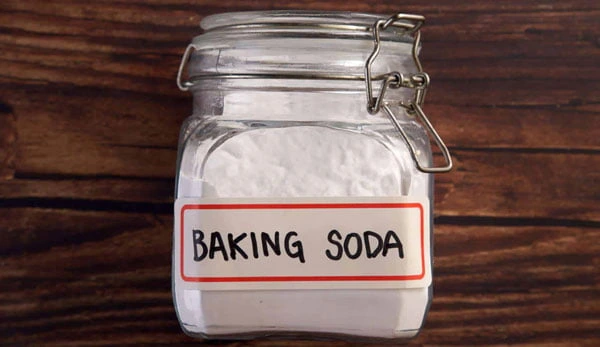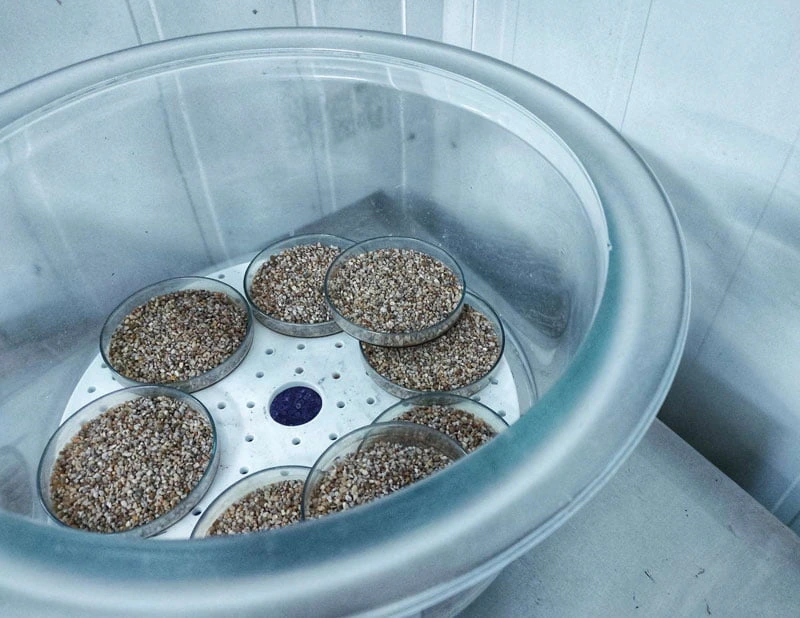Hydrated salts are chemical compounds that contain water molecules in their crystal structures. They are commonly used in various industries, including pharmaceuticals, food, and agriculture. These salts are formed when a salt compound combines with water molecules, and the resulting crystal structure contains a specific number of water molecules per salt molecule.
Hydrated salts have unique properties that make them useful in many applications. For example, they can be used as desiccants to absorb moisture from the air or as a source of water in chemical reactions. They can also be used as a flavoring agent in food or as a fertilizer in agriculture.
The properties of a hydrated salt depend on the number of water molecules in its crystal structure, which can affect its solubility, melting point, and stability.

What Is Hydrated Salt
Hydrated salt is a type of salt that contains water molecules within its crystal structure. The water portion is known as ‘water of hydration’ or ‘water of crystallization’. The formula includes both the salt and the water molecules, and it is represented by a ratio that indicates the number of water molecules per salt molecule.
The presence of water of hydration affects the physical and chemical properties of the salt. For example, hydrated salt tends to be more soluble in water than anhydrous salt (salt without water of hydration). It may also have a different crystal structure and color than anhydrous salt.
One common example of hydrated salt is copper(II) sulfate pentahydrate, which has a formula of CuSO4·5H2O. This means that for every copper(II) sulfate molecule, there are five water molecules present in the crystal structure. The mass of the salt is greater than the mass of the anhydrous salt due to the added mass of the water molecules.
What Are Hydrated Salts Used For
Hydrated salts are used in various industries, including agriculture, food processing, pharmaceuticals, and construction. One common application of hydrated salts is as a drying agent in manufacturing facilities. They are used to absorb moisture from the air and maintain a dry environment.
Hydrated salts are also used as electrolytes in batteries, where they play a critical role in conducting electrical charges. For example, lithium-ion batteries use lithium cobalt oxide, a hydrated salt, as a cathode material.
Additionally, these salts are used in the production of fertilizers, where they help to deliver essential nutrients to plants. These salts are also used in the food industry as additives to improve the taste and texture of processed foods.
In the pharmaceutical industry, hydrated salts are used to enhance the solubility and bioavailability of drugs. By incorporating water molecules into drug molecules, the resulting salts dissolve more easily in water, making them more readily available for absorption into the bloodstream.
Hydrated salts are also used in construction materials such as concrete, where they improve the strength and durability of the structure.
Types Of Hydrated Salt
Here are some examples of Hydrated salts.
Magnesium Sulfate Hydrates
Magnesium sulfate, also known as Epsom salt, is a common hydrated salt that is used for various purposes. It has the formula MgSO4·nH2O, where n represents the number of water molecules. The most common form of magnesium sulfate is heptahydrate, which has seven water molecules in its crystal structure.
When heated, magnesium sulfate heptahydrate loses its water of hydration and becomes anhydrous magnesium sulfate. Magnesium sulfate hydrates are used as desiccants, dehydrating agents, and in hot baths for health benefits.
Lead Hydrates
Lead hydrates are a group of hydrated salts that contain lead cations and water molecules. They are usually colorless or white, and some have a hygroscopic property, which means they can absorb water vapor from the air. Lead hydrates are used in the production of lead-acid batteries, pigments, and other chemicals.
Borax Hydrates
Borax hydrates contain boron, sodium, and water molecules. The formula for borax hydrates is Na2B4O7·nH2O, where n represents the number of water molecules. Borax hydrates are soluble in water, stable at room temperature, and are used as desiccants and in the production of glass, ceramics, and other chemicals.
Calcium Chloride Hydrates
Calcium chloride hydrates are hydrated salts that contain calcium cations and water molecules. The formula for calcium chloride hydrates is CaCl2·nH2O, where n represents the number of water molecules.
Calcium chloride hydrates are hygroscopic and can absorb water vapor from the air. They are used in the production of concrete, food, and other chemicals.
Glucose Hydrates
Glucose hydrates are hydrated salts that contain glucose, also known as dextrose, and water molecules. The formula for glucose hydrates is C6H12O6·nH2O, where n represents the number of water molecules. Glucose hydrates are used in the production of food, medicine, and other chemicals. Glucose hydrates can undergo efflorescence, which means they can lose their water of hydration when exposed to air.

Is Baking Soda a Hydrated Salt?
While the baking soda in your kitchen cabinet is not typically considered a hydrated salt, it can form a hydrated form under certain conditions. When baking soda is exposed to moisture, it can absorb water molecules and become hydrated, forming a compound known as sodium bicarbonate monohydrate (NaHCO3•H2O).
This hydrated form of baking soda is less stable than the anhydrous compound and can be used as a desiccant to absorb moisture.
Baking soda, also known as sodium bicarbonate, is a type of salt that is commonly used in baking, cleaning, and as an antacid. It is an ionic compound that consists of sodium ions (Na+) and bicarbonate ions (HCO3-).
Despite its ability to form a hydrated compound, baking soda is typically sold in its anhydrous form, which is more stable and easier to handle. The anhydrous form of baking soda is soluble in water and can be used as a leavening agent in baking, where it reacts with acids to release carbon dioxide gas and create a light, fluffy texture in baked goods.
Baking soda is also good at absorbing odors, so many people keep a open box of it in their refrigerator. Baking soda is an ingredient in many home DIY cleaning products. It also can be helpful to douse a grease fire on your stove.
Final Thoughts
Hydrated salts are an important type of chemical compound that contain water molecules within their crystal structures. These salts can have unique properties, such as color and hygroscopicity, that make them useful in a variety of applications.
Overall, hydrated salts are a fascinating type of mineral that can have a wide range of properties and applications. By understanding their properties and limitations, researchers and industries can continue to explore the potential uses of these important chemicals.
For more information about different types of Salts, see our article What is Salt? for some of the more common salts that have household and garden uses. If other industrial uses for salt are of interest, try this article: Molten Salt: The Future Of Energy Storage.

